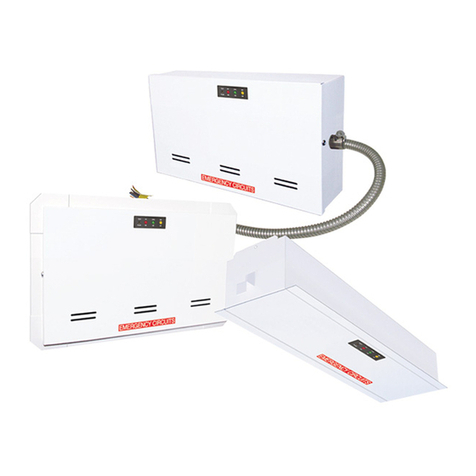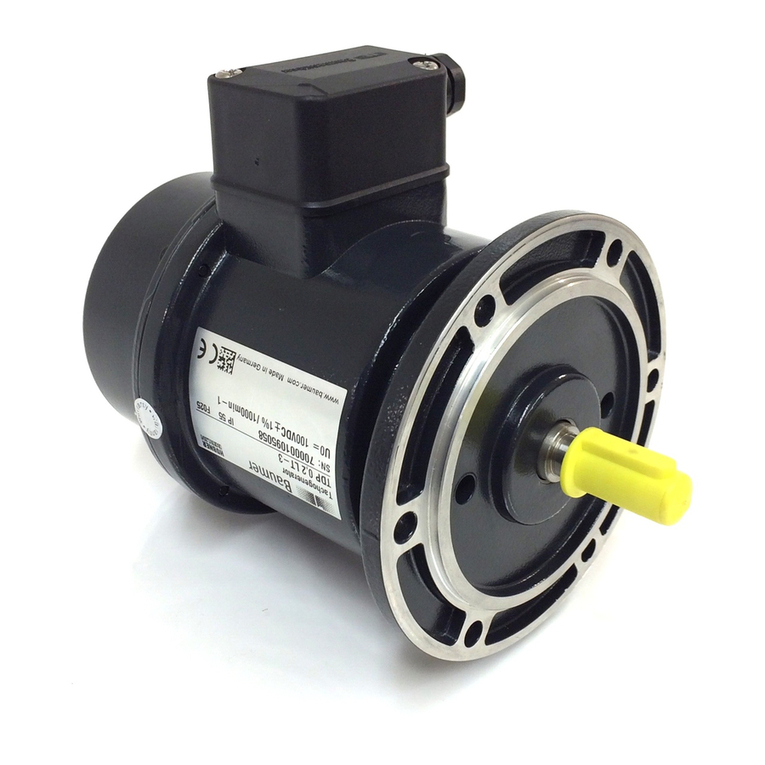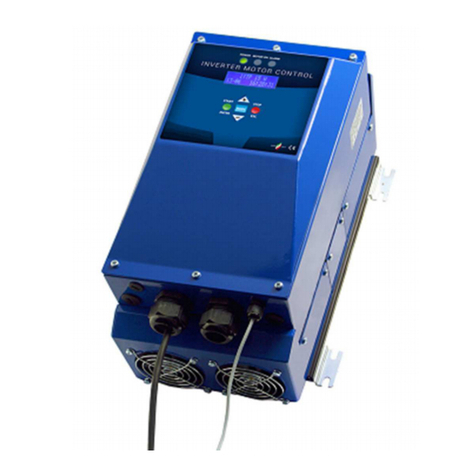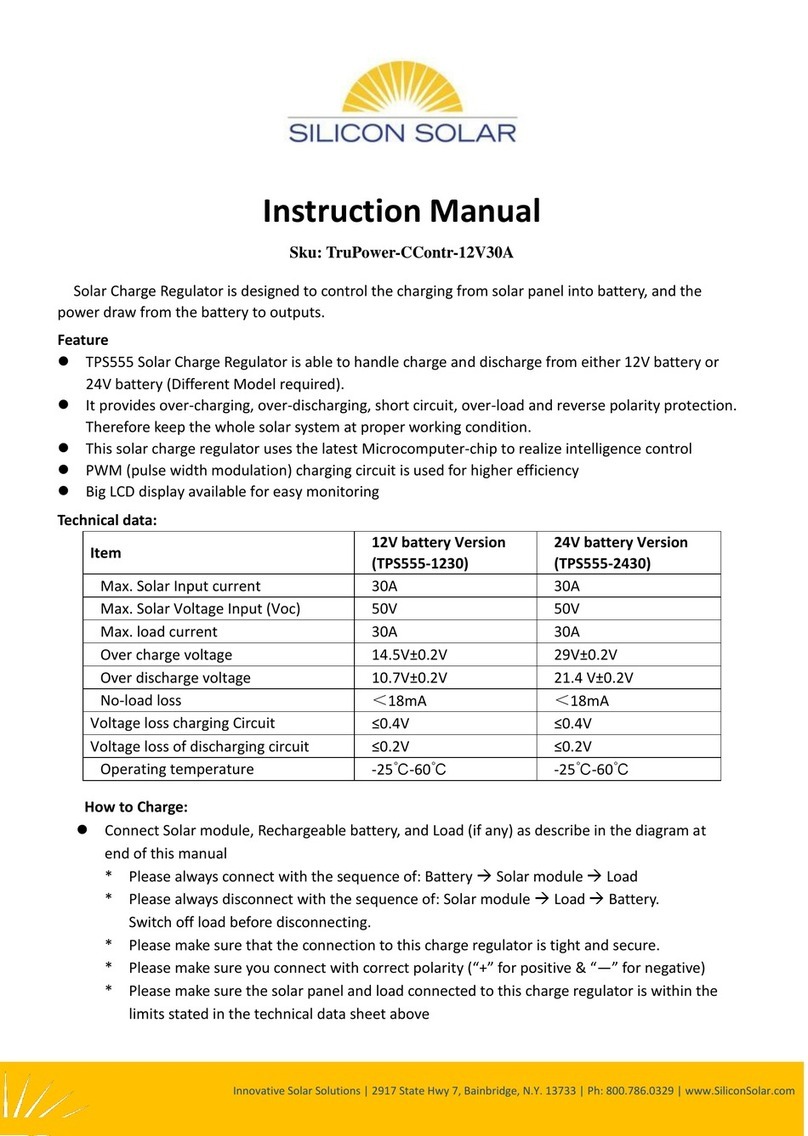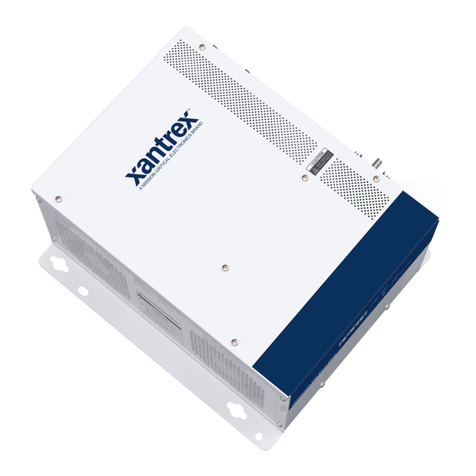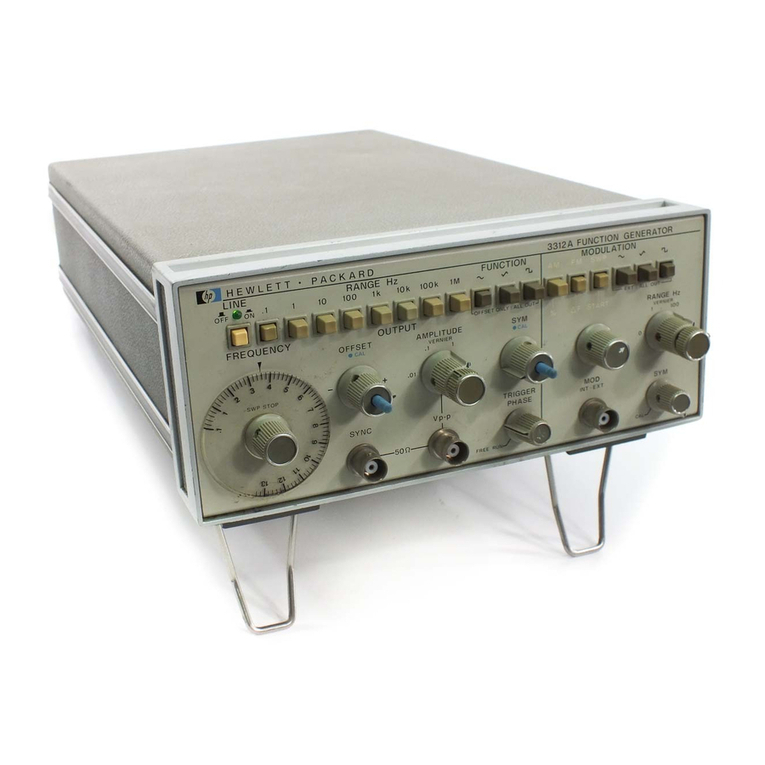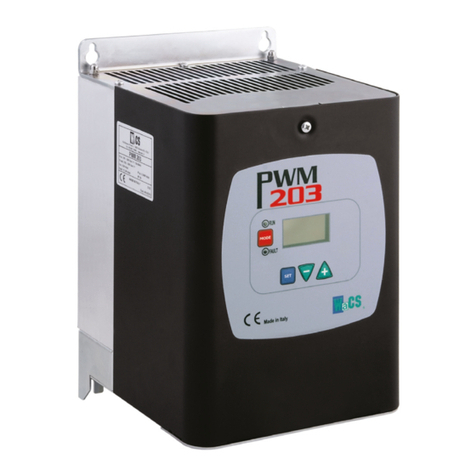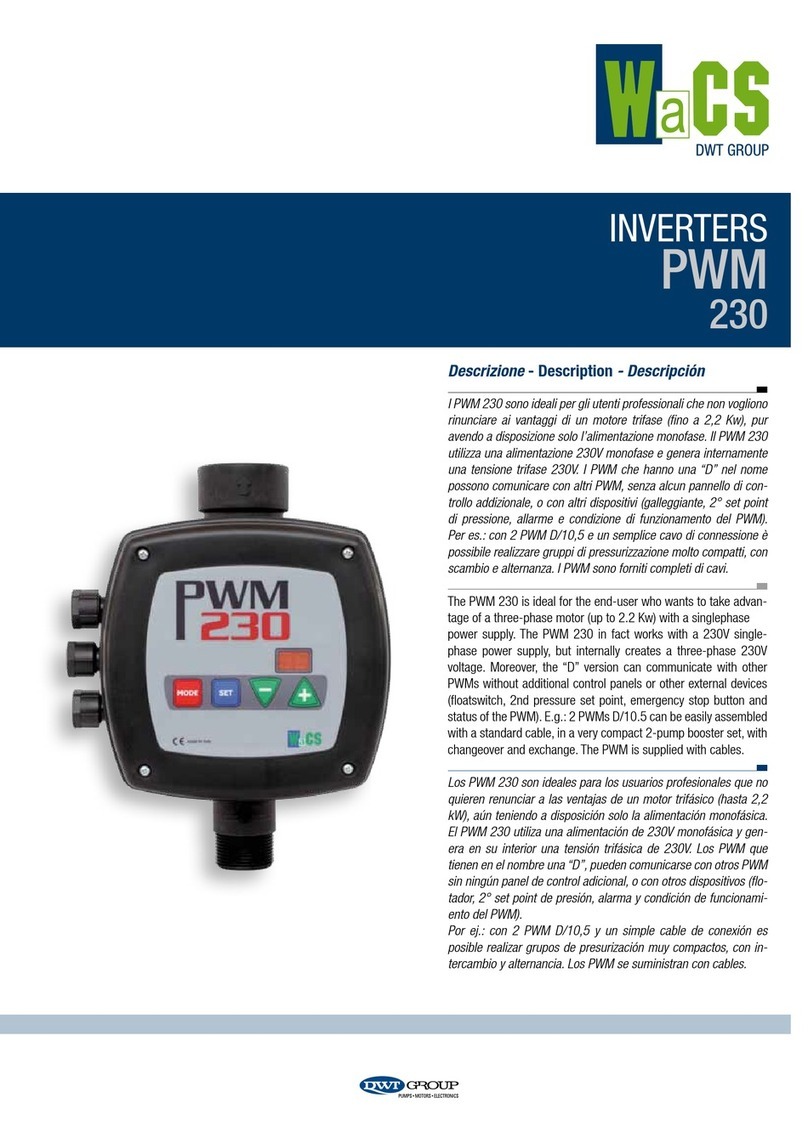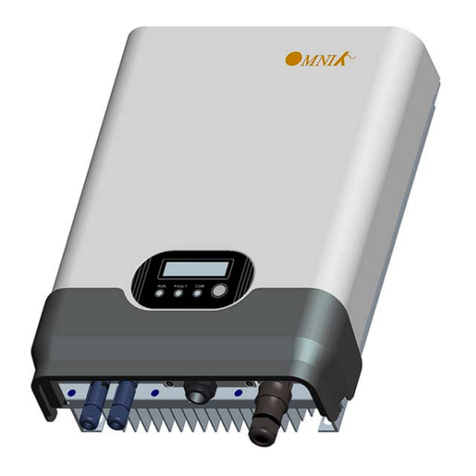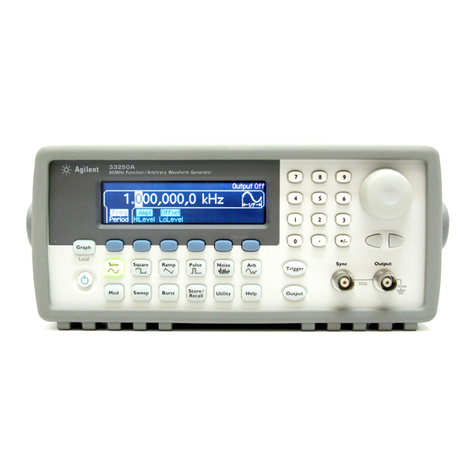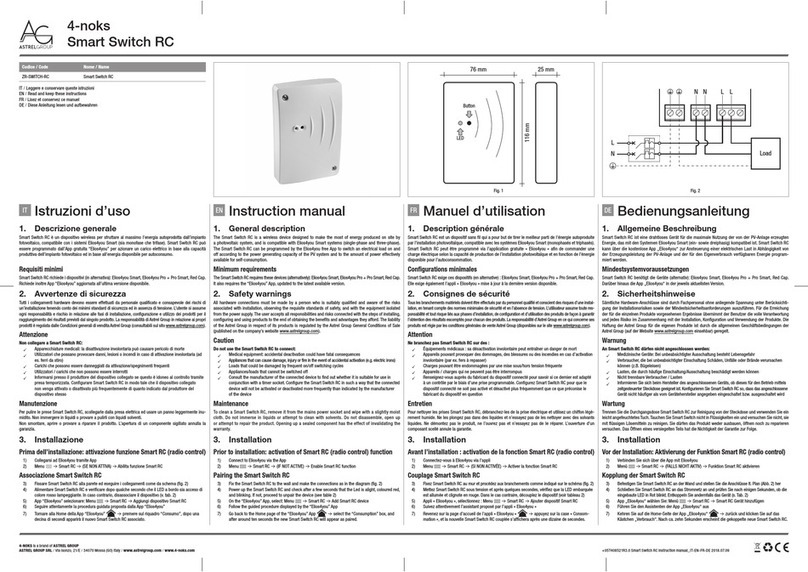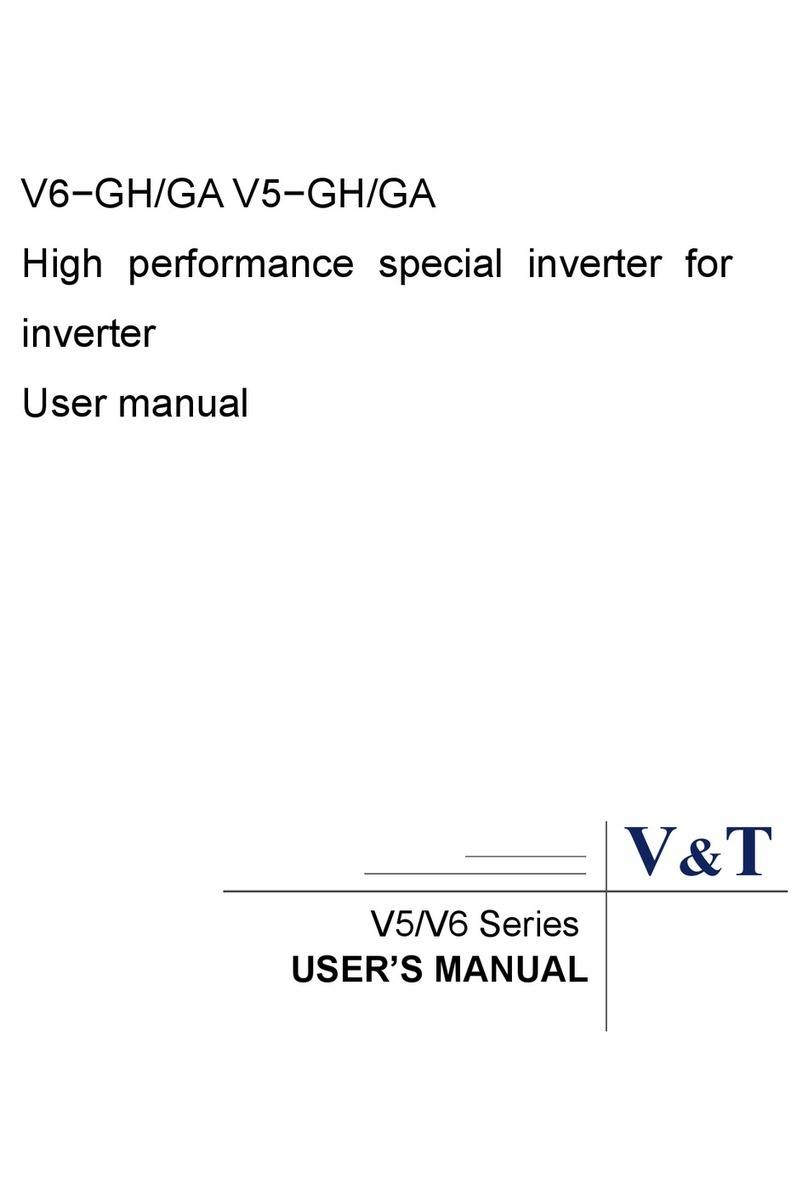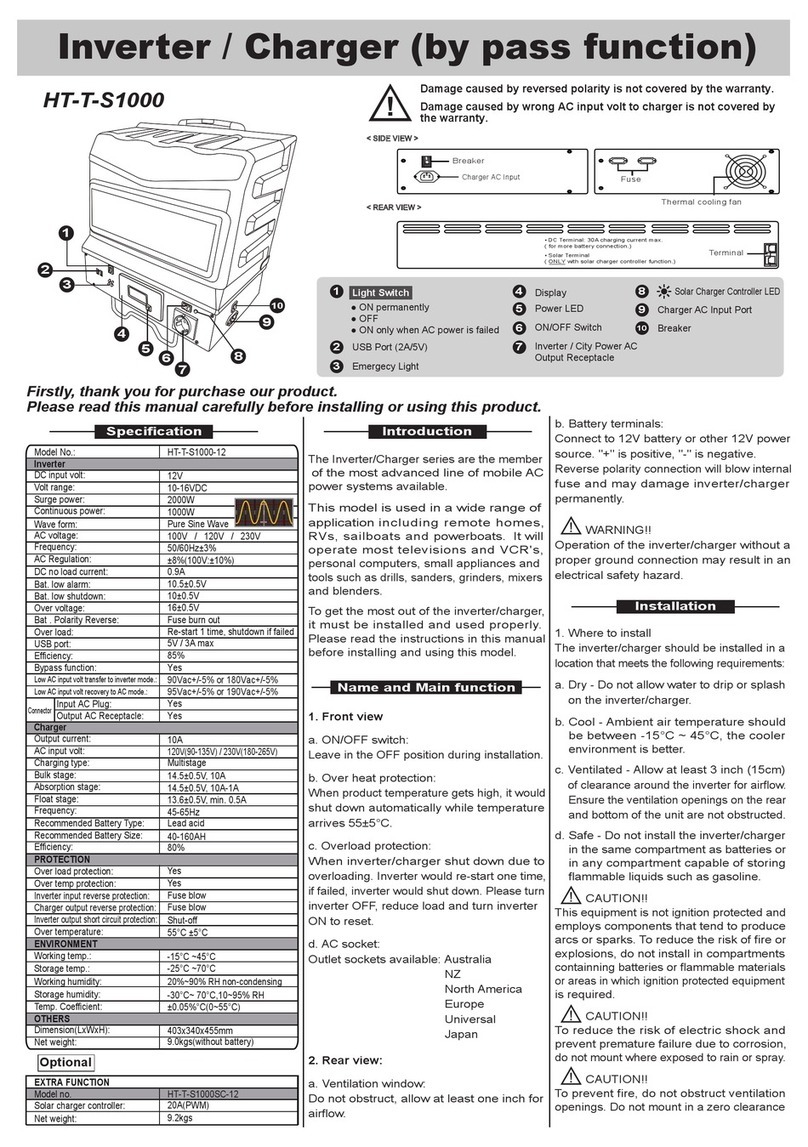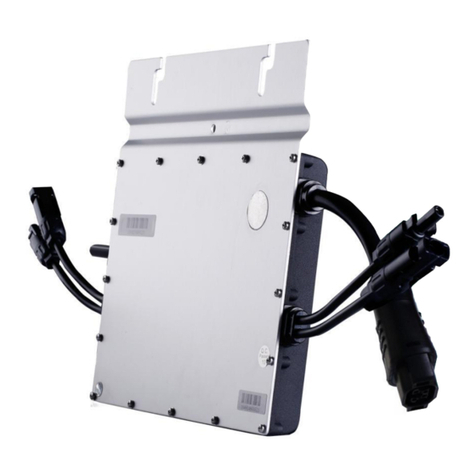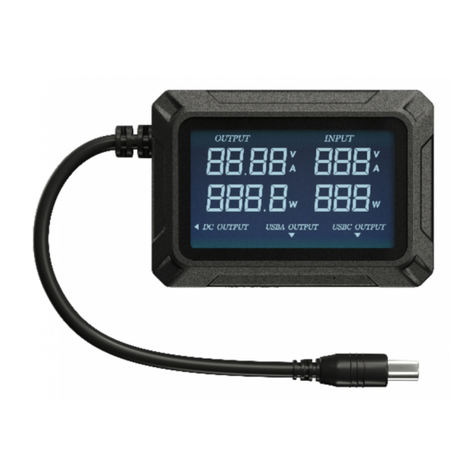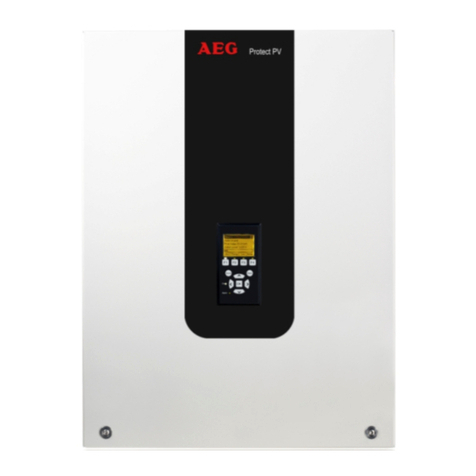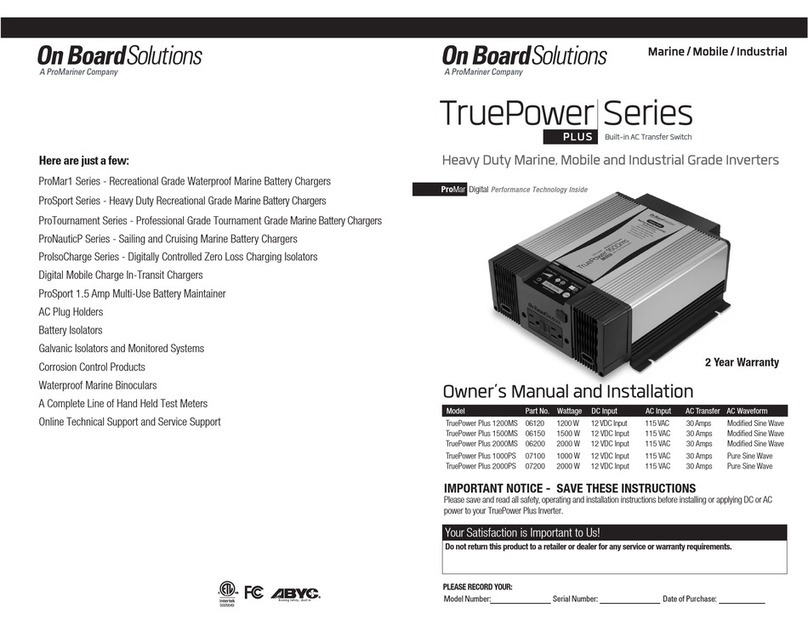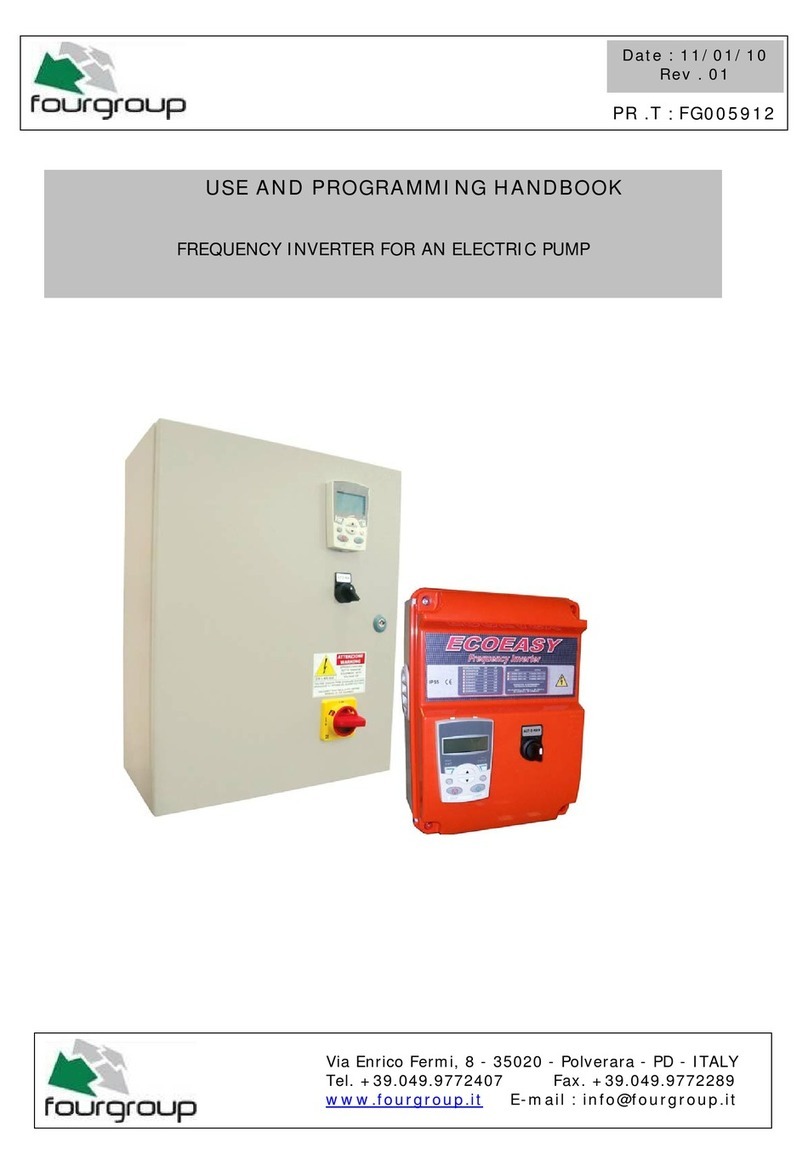
Collegamenti elettrici - Electrical connection - Připojení k elektrickému proudu
Collegamento alla linea di alimentazione
La connessione tra linea di alimentazione e PWM deve essere
effettuata con un cavo a 3 conduttori (2 fasi + terra) .
I morsetti di ingresso sono quelli contrassegnati dalla scritta LN e da
una freccia che entra verso i morsetti, vedi Figura A pag.12.
one sui morsetti di uscita destinati al carico danneggia irrimedia-
bilmente tutto l’apparato!
Collegamento sensori
Le terminazioni per il collegamento dei sensori si trovano nella parte in
basso a destra e sono accessibili rimuovendo la vite del coperchio col-
legamenti vedi Figura 3. I sensori devono essere collegati negli
appositi ingressi contrassegnati dalle serigrafie “Press” e “Flow” vedi
Figura 2 pag 9.
La sezione, il tipo e la posa dei cavi per l’alimentazione dell’inverter e
per il collegamento all’elettropompa dovranno essere in scelte in ac-
cordo alle normative vigenti. La corrente all’elettropompa è in genere
specificata nei dati di targa del motore.
Collegamento del sensore di flusso (Opzionale)
Il sensore di flusso viene fornito assieme al proprio cavo. Il cavo deve
essere collegato da un lato al sensore e dall’altro all’apposito ingresso
sensore di flusso dell’inverter, contrassegnato dalla serigrafia “Flow”
vedi Figura 2 pag. 9.
Il cavo presenta due diverse terminazioni con verso di inserzione ob-
bligato: connettore per applicazioni industriali (DIN 43650) lato
sensore e connettore a 6 poli lato PWM.
Nota:
il sensore di flusso ed il sensore di pressione presentano sul
pro- prio corpo lo stesso tipo di connettore DIN 43650 per cui è
necessario porre attenzione al collegamento del giusto sensore sul
giusto cavo.
La corrente di alimentazione al PWM può essere valutata in generale
(riservando un margine di sicurezza) come 1/3 in più rispetto alla cor-
rente che assorbe la pompa.
Sebbene il dispositivo PWM disponga già di proprie protezioni interne,
rimane consigliabile installare un interruttore magnetotermico di pro-
tezione dimensionato opportunamente.
L’interruttore magnetotermico di protezione ed i cavi di
alimentazione del PWM e della pompa, devono essere di-
mensionati in relazione all’impianto.
L’interruttore differenziale a protezione dell’impianto deve essere
correttamente dimensionato e deve essere di tipo “Classe A”.
L’interruttore differenziale automatico dovrà essere contrasseg- nato
dai due simboli seguenti:
Collegamento di un sensore Raziometrico
Il cavo deve essere collegato da un lato al sensore e dall’altro
all’apposito ingresso sensore di pressione dell’inverter,
contrassegnato dalla seri- grafia “Press 1” vedi Figura 6. Il cavo
presenta due diverse terminazioni con verso di inserzione obbligato:
connettore per applicazioni industriali (DIN 43650) lato sensore e
connettore a 4 poli lato PWM.
Collegamento della pompa
La tensione di alimentazione del motore dell’elettropompa installata
deve essere 230V trifase. Le macchine elettriche trifase hanno gen-
eralmente 2 tipi di collegamento come mostrato in Figura 3 e Figura 4
Connection to the power line
The PWM must be connected to the power line by means of a 3-core
cable (2 phases+earth).
The input terminals are those marked with the text LN and an arrow
pointing towards the terminals.
The section, type and laying of cables for inverter power supply and
electric pump connections must be selected in compliance with current
standards. Table 2: Cable sections provides indications on the cable
section to be used.
The table refers to cables in PVC with 4 wires (3 phases + earth) with
the minimum recommended section based on the current and length
of cable.
The electric pump current is normally specified on the motor dataplate.
The current supply to the PWM can normally be calculated (taking a
safety margin into account) as 1/3 of the current absorbed by the
pump. Although the PWM is already equipped with internal safety
devices, the installation of a suitably sized thermal magnetic circuit
breaker is recommended.
If the entire power range available is used, for specific information on
the current to be used when choosing cables and the thermal
magnetic circuit breaker.
Il collegamento a triangolo è tipicamente quello da utilizzare per lavo-
rare a 230V (tensione Minore).
Per versioni non corredate di cavo la connessione avviene sul
morsetto con serigrafia “PUMP” e con la freccia in uscita. Il cavo deve
avere una sezione minima di 1.5 mm
2
(vedi figura 5).
L’errato collegamento delle linee di terra ad un morsetto
diverso da quello di terra danneggia irrimediabilmente tutto
l’apparato! L’errato collegamento della linea di alimentazi-
The thermal magnetic circuit breaker and power cables
of the PWM and pump must be sized according to the
WACS si riserva
il
diritto di apportare modifiche senza obbligo di preavviso
-
WACS reserves the right to make any changes
it
deems
fit
without notice
-
WACS
se reserva el derecho de realizar modificaciones sin la obligación de aviso previo
